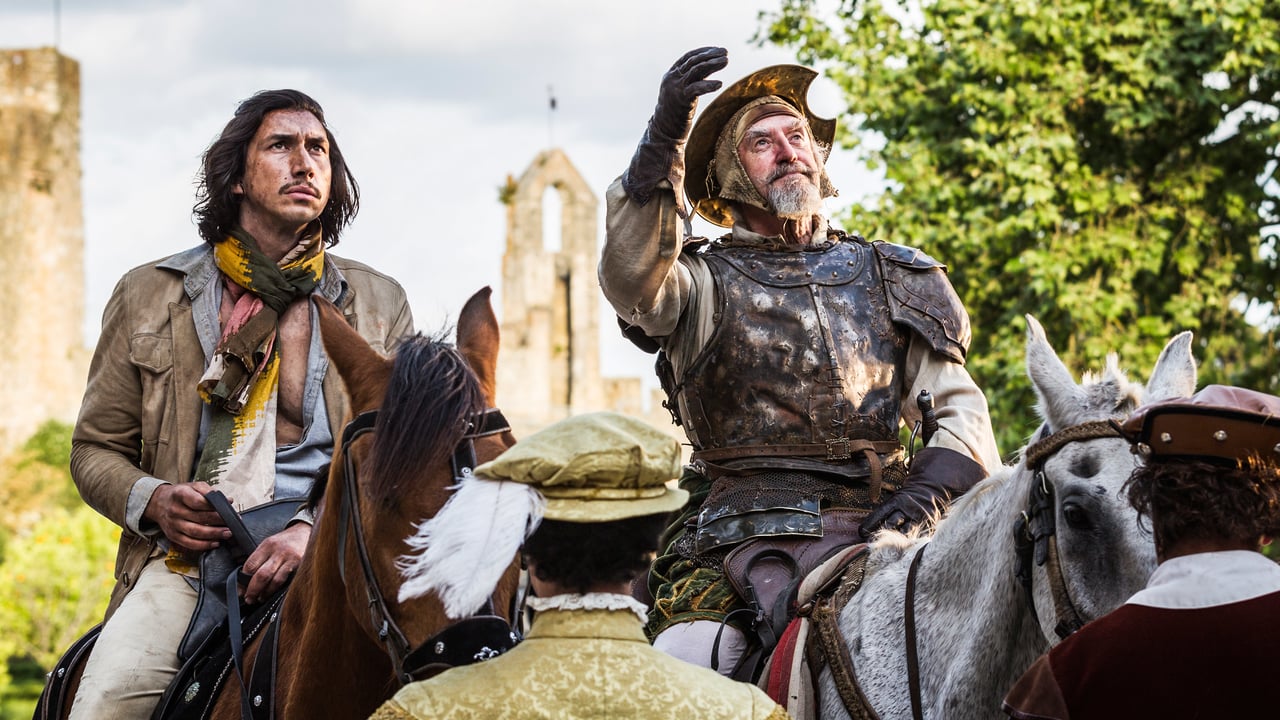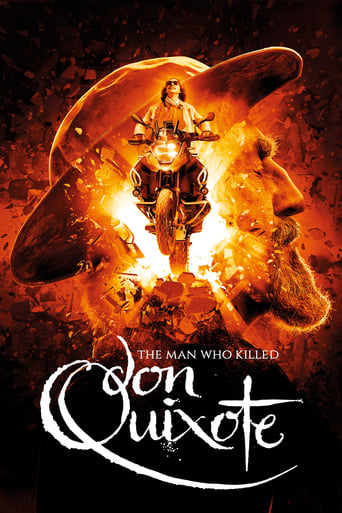

I saw this as a surprise screening just now and when the name Terry Gilliam popped up everyone was really happy and excited about what we were about to witness. Unfortunately the movie - ambitious as the idea might be, paying hommage to Don Quixote placing it in a real contemporary setting - it was a chaotic and upsetting disaster with me at times feeling embarrassed for the awful lines "f**k you! Alexey is the only one who does that!" and being incredibly bored inbeetween. Can't believe Adam Driver gave himself for that. This is no Brazil, it's confusingly bad and written to hurt you! Ok the costumes are cool but that doesn't save it.. Stay away!
... View MoreTotally bonkers, dreamlike, vintage Gilliam and in the end even Lynchian weird. When it works it's brilliant, when it doesn't, it's baffling and sometimes boring. But even when the script doesn't work, the movie is saved by the incredible cast. It's among both Adam Driver's and Jonathan Pryce best work. Also, I'm in love with Joana Ribeiro.
... View MoreThere are those who have a deep desire to see beauty and even be part of it. There are also those who are on moral quests. There are people who are excited by the imaginative. If this is you this movie may turn out to be a favorite of yours. The movie is not a retelling of the Don Quixote novel. It's a variation on the themes, the landscapes, the yearnings and other ingredients in the original Spanish source (Cervantes). Universal ideas and conflicts from it are reworked and put in different contexts. Gilliam's best for a long time? We'll see. I would say that it's loftier than he's gone before (but with some low comic touches for sure). There are many storyline twists in 'The Man Who Killed Don Quixote.' In addition, the movie business is satirized (sometimes with a feather, sometimes with a hammer). As for the locations: Gilliam has chosen them with great care; the cinematography does not let his gorgeous choices down. The directing, acting and music are superb. To date, (for me anyway) these are the most memorable film performances by Jonathan Pryce, Adam Driver, and some others in the cast. Pryce is eloquent but above all touching; Driver is perfect as the freaked-out guy who needs to escape the mess. Other characters/actors give me the creeps or fill me with praise for their spot-on nasty or nice performances.
... View MoreTerry Gilliam has battled long and hard to make this film. I for one and grateful he persevered. It is not only beautiful to look at, but is at times funny, at times surreal, at times touching, at times dreamlike, but at all times involving of both the brains and hearts of the audience. Adam Driver is the Hollywood brat given a huge budget to make a movie about Don Quixote in Spain. One day he realised that he close to the village where he made his student version of the story, using locals. Curiosity gets the better of him when he sees a sign pointing the way to Don Quixote and discovers the man he cast in his student film has since stopped being a cobbler but believes himself to be the real Don Quixote. When the brat frees him from the prison his wife has him locked up in as a tourist exhibit, they embark on a series of adventures that mix up dreams and reality, and show the young man the damage he inflicted on those he used in his student film. The dreams and reality seamlessly overlap and provide the audience with non stop inclusion in what is going on. I absolutely adored this film, and went back to see it a second time only a few days later, knowing I will have missed a lot first time around, so full of images and colour and character that it is. Bravo Terry! And thank you.
... View More